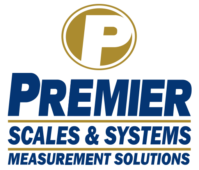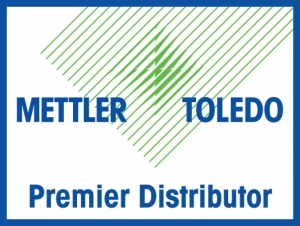Have you ever had a question about metrology or our services, but didn’t have the opportunity to ask? You’re in luck! For your convenience, we’ve compiled some of our customer’s most common questions and posted them to our Frequently Asked Question Library! If you can’t quite find the question you’re looking for, or want more information on an existing question, feel free to fill out the form below or give us a call at 1 (800) 474-9838.
Q How can I schedule service?
A Whether you need calibrations, repairs, or other services, there are several convenient ways to schedule:
- Website: Click the “Schedule Service” link at the top of any page to access our service scheduling form. Once there, you only need to fill out some basic information about yourself and the service needs and our service team will be in touch with as soon as possible to confirm scheduling.
- Email: You can send an email to our Service Department at service@premierscales.com.
- Phone: As always you call our 24-hour office number at 1(800) 474-9838. You can also call or text your account manager directly.
Q What are your service hours? Is your team available on weekends & Holidays?
A We are available 24 hours a day, 7 days a week, 365 days a year!
Rates are typically higher for after-hours and weekend/holiday service.
Q What is best ways to pay my invoice?
A We take checks, credit cards, and ACH.
Checks can be mailed to: 4901 N. Saint Joseph Ave. Evansville, IN, 47715
Please call 1(800) 422-9838 for Credit card and ACH payments
Q What types of measuring instruments does Premier Scales & Systems calibrate?
A Short answer? Pretty much everything.
We provide a wide range of accredited calibration services for scale, force, thermodynamic, dimensional, electrical, chemical, and fluid measurement instruments. Not to mention, we calibrate a wide range of devices not included in our ISO/IEC 17025 Scope. If you need it calibrated just ask!
For a quick view of services, see our Calibration Line Card. For something a little more in-depth, check out our full ISO/IEC 17025 Scope.
Q How can I get a quote for a product or service?
A
- Website: Just click the “Request a Quote” link; you will be directed to a page to fill out some basic information about your service or product needs. We will quickly generate a quote and get in contact with you promptly.
- Email: Send an email to quote@premierscales.com providing as much information as possible, and we will get you a quote.
- Phone: Call our office at 1(800) 474-9838 and ask for sale or service. You can also contact your account manager directly by email/phone/text. If you need your Account Manger’s contact information, it can be found here.
Q How can I obtain my calibration certificates?
A You can access your calibration certificates through our secure on-line certificate management system on our website.
If you do not have login credential, please contact our service department at 1(800) 474-9838 or service@premierscales.com.
To learn more about the on-line certificate management system visit our blog post on accessing your calibration certificates.
Q What is Calibration and why is it so important?
A Calibration is a comparison between a known measurement (the standard) and the measurement using your instrument. The goal of calibration is to reduce measurement errors and minimize any measurement uncertainty by ensuring the accuracy of the measuring device. Calibration simply quantifies and helps control errors or uncertainties within measurement processes.
Calibration is important because it ensures an instrument’s accuracy and ability to report the correct measurements. No matter how well you take care of an instrument, it will eventually drift outside of acceptable tolerances for your procedure and report inaccurate results.
If you want more information on the subject, read our blog post about calibration and its importance.
Q What is the difference between and NIST (standard calibration) and ISO 17025 Accredited Calibration?
A The National Institute for Standards and Technology, NIST, is an organization responsible for maintaining the national master standard for various measurements. All of our standards are traceable to NIST or to another National Measurement Organization. This traceability guarantees the precision of our standard. For more information visit NIST’s official website.
ISO/IEC 17025 is an international standard that demonstrates a company’s technical competency and ability to produce accurate test and calibration results with complete precision. Being accredited to ISO/IEC 17025 is the most rigorous quality standard in the measurement industry.
At a minimum, an ISO/IEC 17025 Accredited Calibration Certificate indicates the following:
o Vendor’s quality management system meets ISO/IEC 17025 standards
o Calibration certificate data and format meets ISO/IEC 17025 standards
o Proficiency testing has been performed
o Contract review in place
o Uncertainty budgets on file
o Data Validation by the quality manager
o 3rd Party audit by party accrediting body
o The calibration must be traceable
Our Accreditation is through the ANSI National Accreditation Board, ANAB. This board is a third-party national quality registrar that issues the scope of work Premier Scales & Systems is qualified to perform. ANAB is one of only six signatories designated by the International Laboratory Accreditation Cooperation, ILAC.
CLICK HERE for ANAB Scope of Accreditation Certificate of Accreditation
Q How often should I calibrate my measuring instruments?
A If available, the manufacturer’s recommended calibration interval is the best place to start. This recommendation can usually be found in the instruction manual, on the manufacturer’s website, or by contacting the manufacturer directly. You should only use this recommendation as a starting point. As an instrument is used, you will learn how your particular process impacts calibration. To learn more about the factors that effect calibration intervals red our blog post on the subject.
Q Who is my designated Account Manager and how do I reach them?
A We have a dedicated account manager for each of our service locations as well as an inside sales manager for our extended services locations. They are ready to assist you with any of your needs. Please fill our the form below or visit our contact page more infromation on your representative.
Q What industries does Premier Scales & Systems serve?
A Weighing and measuring devices are used in every industry imaginable. So as you might expect, we offer sales, service, and calibration to a wide range of industries, including yours! See our Industry Segment page for a basic list.
Q What products does Premier Scales & Systems sell?
A If we service it, we sell it. Premier sells a variety of scales including lab balances, bench & counting scales, platform scales, floor scales, weigh modules for tanks, truck scales, railroad scales. As we have expanded our ISO/IEC 17025 calibration scope, we have also expanded the measurement devices we offer. We now offer precision instruments and measuring tools like test weights, electrical devices, dimensional tools, thermodynamic products, and more. For the most up-to-date and comprehensive list of devices of products we offer, please see our products page. Premier also offers a full range of custom automation, programming, software, and engineering solutions.
Q Do you have any data collection or data management options available?
A Absolutely. Data collection and management is a rapidly growing section of the weighing industry. Premier offers a variety of intuitive software on the forefront of this growing field.
Q Do I really need preventive maintenance?
A Yes, preventative maintenance (pm) is an essential part of keeping your measurement equipment in working order. Performing regular preventative maintenance, instead of relying on reactive maintenance, can help maintain accuracy and greatly increase the life cycle of the equipment. If you’re not sure where to start, Premier is here to help. We will work with your team to build comprehensive PMA programs to keep your facility running efficiently as possible.
For more information on Preventative and reactive maintenance, check out our blog post, “Is it Time to Rethink your Maintenance Strategy?”
Q What is Measurement Uncertainty?
A In the world of metrology, there is no way to achieve 100% accuracy. It is only a goal. For every measurement, even the most careful and precise, there is always a margin of doubt or uncertainty. As explained in this blog post, measurement uncertainty is the quantification of that doubt. In everyday speech, we use the expression, “give or take” to represent this uncertainty. For example, someone may say, “this part weighs two pounds give or take an ounce.”
Q What is Handbook 44, and why does it matter?
A NIST Handbook 44 is a nationally adopted standard that provides a comprehensive set of requirements for evaluating the accuracy of weighing and measurement devices. Although Handbook 44 is not federal law, it is widely accepted and used by law enforcement to evaluate the accuracy of scales used in commerce (buying and selling). Following Handbook 44 procedures helps to identity weighing errors such as linearity and shift. Its broad adoption has played an integral role in regulating weight measurement, improving quality/consistency, and ensuring integrity in the marketplace. It also provides a uniform system of checking scales and helps to ensure consistency in the scale calibration industry as well as fairness and equity in the marketplace.
Premier Scales & Systems often uses the NIST Handbook 44 testing methods on legal-for-trade scales and in cases where there is no customer-specified testing procedure. To learn more about Handbook 44 and it’s important, check out our article on the subject.
Q What is GWP, and how is it implemented?
A You may have heard similar acronyms such as GMP (Good Manufacturing Practices) and GLP (Good Laboratory Practices). GWP (Good weighing Practices) is the global weighing guideline for the management of weighing instruments. GWP is a comprehensive process designed to select the appropriate weighing equipment for any application. If followed correctly, this process will ensure accurate results at all time. The GWP containtins five simple steps, following the life cycle of the instrument. In each of these important five steps, GWP helps the user make the right decisions.
The Five steps of GWP:
1. Evaluate the process and use of the weighing instrument
2. Select a balance that fulfills the respective weighing requirements
3. Professional installation and configuration of the weighing device
4. Implement calibration procedures on the weighing device
5. Perform routine operation and testing to ensure accurate results.
If followed correctly, these steps will decrease the cost of ownership, increase the life cycle, and minimize the risk of your weighing devices.
If you are interested in implementing GWP in your facility, our knowledgeable team is here to help. We will walk you through the process from selecting the best possible weighing equipment for your application to implementing life long maintenance and care.
Q What is the true cost of downtime, and how do I calculate it?
A As you may expect, the answer varies widely for each process. Five key factors factor into the final true cost of downtime: Lost Revenue, Lost Productivity, Recovery Costs, Defective Product, and other Intangible Costs.
To learn more about calculating each factor, read the cost of downtime article our blog.
Q What resolution do I need for my measuring device?
A Since higher-resolution solutions can quickly add to the cost of a measuring device, deciding the proper resolution can be difficult. Luckily the knowledgable team at Premier Scales & Systems is here to help. When making your decision, our team will walk you through important factors such as desired accuracy, acceptable tolerances, and the cost of the product being measured.
Note: Readability is sometimes incorrectly substituted for Resolution. Readability is not the same as a device’s true resolution capability. Just because a device has readability to a certain value, does not mean it has the resolution to accurately portray that value.
Q What is process tolerance?
A Process tolerance is part of an age-old struggle between product quality and costs. In the simplest terms, tolerance can represent “good enough.” In practice, Process Tolerance defines the minimum and maximum standard deviation allowed in the production of goods. This deviation is generally represented by a +/- value following a reference amount. For example, the procedure to make a sauce may call for 10.0(+/- 0.5) oz of basil. This means the end products can have between 9.5 and 10.5 oz and still be considered in tolerance. It’s worth noting that it does not need to be an even split. A tolerance could have different upper and lower limits such as 10.0(+0.2 -0.5) oz. To learn more about process tolernace and how to calulate it, check out our blog post What is Process Tolernace?



